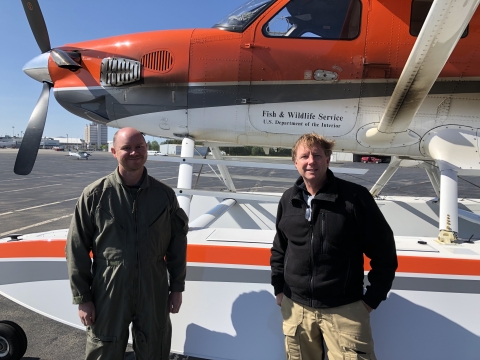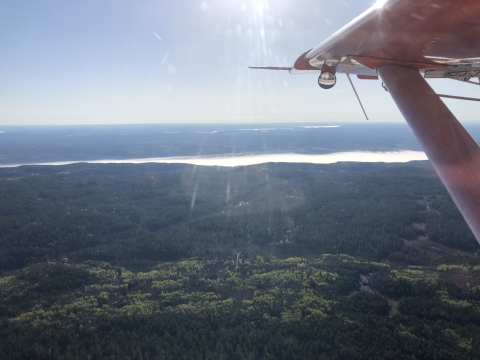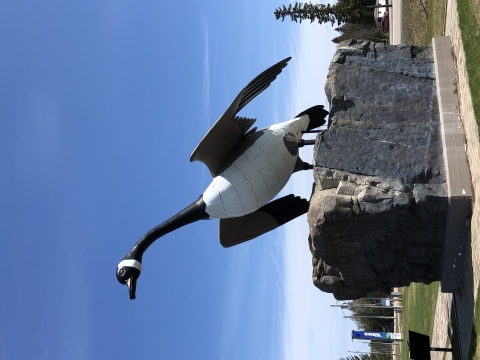We were counting ducks. And geese. But we weren’t the first and we won’t be the last. Though the pilot, John Rayfield, and I were fairly new to our survey area, completing just our second year, the spring waterfowl surveys in eastern Canada have been flown since the early 1990’s. Over thirty years of surveys is a long time to get to know a place, but it doesn’t come close to the survey period in central North America, an area that has been flown since the 1960’s, over sixty years! Either way, the wealth of knowledge generated by this long-running survey has allowed for the sustainable management of waterfowl throughout North America for decades.
I often wonder when flying these surveys, how much of what I am seeing has been seen by numerous other pilots and observers? Who has watched the tree grow through the roof of that cabin? Who else has noticed the set of lakes that almost exactly replicate the pattern of the stars in the Big Dipper? Though parts of the landscape have certainly changed due to human encroachment or the industrious activities of beavers, much of what us aerial observers see every year is the same. And there’s comfort in that. We are seeing the same species of ducks, which in the east are often black ducks, common mergansers, or ring-necked ducks, and seeing the same rivers and lakes.
There is also always something new. You never want to let your eyes wander too far off the ground when watching for birds, even if there are few wetlands around, as you might miss some unique wildlife encounters. The other day a family of river otters were woken from a nap by our plane flying 200 feet over their resting place. These were the first wild otters I had ever seen! Or maybe when landing at a rural airstrip instead of the geese you have been counting from the air, you find a giant statue erected to attract tourists to remote Ontario.
Whatever we see, old or new, it is always a joy to contribute to long-term monitoring of waterfowl and know that we continue to manage these birds sustainably as long as we have.







